Comparing sunflower seed butter to peanut butter is like pitting apples against oranges. They're both roundish, but otherwise, nothing alike. Both plant-based butters are protein-rich with healthy fats, but their nutrition profiles differ.
For starters, sunflower seed butter is made from seeds, i.e. sunflower seeds, while peanut butter is made from a legume.
Yep, that’s right. Peanuts spring from the same family as peas and beans; they grow from a bush and are not a tree nut, like almonds or pecans.
Seeds are having a nutritional moment as people are adding chia, flax, pepitas and hemp – to name a few – to salads, baked goods (for recipe see SUNFLOWER SEED BUTTER MUFFINS: THEY’RE A LITTLE GREEN), yogurt, smoothies and more.
But wait a minute, legumes are an excellent source of nutrition, too. So, is sunflower seed butter a healthier choice than peanut butter and is it equally tasty with jelly?
SUNFLOWER SEED BUTTER NUTRITION

Would you like to save this recipe or article?
You won't get spam from me, I promise!
If you are allergic to peanuts or tree nuts, the answer to both questions is a resounding, “Yes”! Sunflower seed butter is a delicious choice and pairs well with jelly. The sunflower seeds are roasted and toasted before being pummeled into a creamy mixture.
Be sure and scan the container label for cautionary phrases like “Manufactured on equipment that processes products containing peanuts” or “Manufactured in a facility that processes tree nuts, but not on the same equipment” or the dreaded “May contain traces of nuts.”
VITAMIN E FOR DAYS
Not only is sunflower seed butter a go-to for the allergic, but it's loaded with vitamin E. It has about four times more vitamin E than peanut butter. Because vitamin E is a powerful anti-aging antioxidant, manufacturers often use it as a preservative.)
It's best to get vitamin E from food since supplements greater than 400 IU/day are possibly unsafe, particularly if you have diabetes or heart disease. Supplementation with vitamin E has also been linked with an increased risk of prostate cancer.
Although sunflower seed butter has a good amount of niacin (vitamin B3), peanut butter is a superior source of this vitamin, supplying nearly twice as much. Niacin plays an important role in enzymatic reactions that supply the body with energy.
MAXIMIZE YOUR MINERALS WITH SUNFLOWER SEED BUTTER
Mineral content is where sunflower seed butter truly shines, with more iron, magnesium, manganese, selenium, phosphorous, copper and zinc than peanut butter.
Sunflower seed butter has four times the iron found in peanut butter; more than twice as much copper and selenium; and nearly twice as much magnesium, phosphorous and zinc!
Both are good sources of potassium.
Although they have similar amounts of protein and calories, peanut butter has more protein, 7 g per serving vs the 5.5-6 g of sunflower seed butter, and peanut butter has 10-20 fewer calories.
Peanut butters usually have 180 to 190 calories per 2-tablespoon serving while sunflower seed butters have 200 to 220 calories for the same size serving.
FAT FACTS ON PEANUT AND SUNFLOWER SEED BUTTERS
The fat profile of the two butters differs substantially. Peanut butter contains more saturated fat because it contains palm oil, which is 50% saturated. Sunflower seed butter is brimming with healthy monounsaturated fats.
Most sunflower seed butter have 30% less saturated fat than peanut butter. Natural peanut butter, however, sometimes shuns added palm oil and has the same 2 grams of saturated fat per serving as sunflower seed butter.
READ THE LABELS FOR NUTRITION DETAILS ON FATS, SUGAR AND SALT
You'll have to read the labels for specifics. Even within the same brand, a butter can vary considerably.
Butters that have an even consistency and no oil separation usually contain mono- and diglycerides, refined vegetable oils, as emulsifiers. Peanut butter can contain fully hydrogenated oil for product stability.
Sherry Coleman Collins, MS, RDN, LD, explains that fully hydrogenated oils are not the same as partially hydrogenated oils, which manufacturers are required to remove from products due to 2015 Food and Drug Administration (FDA) stipulations.
In an article written for the National Peanut Board, Collins writes that “Partially hydrogenated oil contains trans fat. Fully hydrogenated oil and palm oils do not contain trans fat.”
She said that using fully hydrogenated oils gives manufacturers some of the same functional benefits as partially hydrogenated oils minus trans fat.
“Fully hydrogenated fats help reduce rancidity, resulting in longer-lasting shelf stability.
Without the trans fats associated with partially hydrogenated oils, fully hydrogenated oils provide an additional option for addressing the challenge of oils separating in peanut butter when stored in the jar, which many consumers prefer, without trans fats.”
The FDA declared that trans fats are harmful and not “generally recognized as safe (GRAS).” Per this regulation, manufacturers have removed them from products to protect people from increased risk of heart disease, stroke and type 2 diabetes.
In addition to emulsifiers, other ingredients to scan labels for are sugar and salt. Many butters contain 2 to 3 grams of added sugar, which is less than a teaspoon. Added salt is minimal, usually adding up to about 100 mg per serving.
You can find varieties of both that do not contain added salt or sugar, particularly in groceries with large selections of natural and organic foods. You can even grind your own peanut butter in some stores.
SUMMARY
🌻 SUNFLOWER SEED BUTTER:
- Go-to butter for people with allergies and sensitivities to peanuts and tree nuts
- Rich source of vitamin E
- Rich source of iron, magnesium, manganese, selenium, phosphorous, copper and zinc
- High in healthy monounsaturated fat
- 20 to 40 more calories than peanut butter
🥜 PEANUT BUTTER:
- Rich source of niacin (vitamin B3)
- More saturated fat
- Slightly more protein
- 10 to 40 fewer calories than sunflower seed butter
HOMEMADE SUNFLOWER SEED BUTTER
Making your own seed and nut butter is not difficult with the help of a food processor or blender. D-I-Y offers more control over ingredients.
For example, all commercial sunflower seed butters are made using roasted kernels for best flavor, but if you prefer raw, unprocessed seeds, you can make it more to your liking.
You can make a totally custom butter, adding in some chia or a functional ingredient, like maca or matcha powder for energy, or warm spices like cinnamon, cloves, and/or a pinch of cardamom for yum factor.
The video below shows how to make a basic sunflower seed butter. It’s quick and short, but shows you how to roast your seeds before processing. It has you add deliciousness with honey and coconut oil.
You can, however, leave out the honey and coconut oil and substitute your favorite sweetener and vegetable oil. If you do choose not to use the sweetener and oil, it will be important to roast the seeds and add a little salt for the best taste.
(Note: When processing, do not add water as it will cause the butter to seize.)
SUNFLOWER SEED BUTTER MUFFINS: THEY’RE A LITTLE GREEN
I used Sunbutter™ to make these yummy banana muffins for breakfast this week. The muffins take on a green tint after baking, which is caused by chlorogenic acid, an antioxidant in sunflower seed butter that turns green when exposed to heat.
It does not hurt the flavor and may help with blood sugar and hypertension although I can’t promise there is enough chlorogenic acid in the recipe to have beneficial effects.
Enjoy the muffins with a cup of coffee or tea to maximize the effect, since those morning beverages are great sources of this phenolic compound.
If you don’t like the color, you could cover the tops with a little berry jam and enjoy a faux pb&j for breakfast!
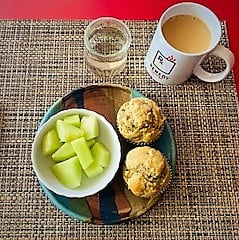
Banana Sunflower Seed Butter Muffins
Ingredients
- ¾ cup milk dairy or plant-based
- 2 teaspoons white vinegar
- 2 ¼ cups AP flour or 1 ¼ cup AP flour & 1 cup whole wheat flour
- 2 teaspoons baking powder
- ½ teaspoon baking soda
- ½ teaspoon salt
- 2 Tablespoons granulated cane sugar
- ¼ cup canola oil
- 2 bananas mashed
- ⅓ cup sun butter sunflower seed butter
- 1 egg beaten, or sub 1 Tablespoon of flax mixed with 2½ Tablespoons of water
- 2 Tablespoons honey
- 1 teaspoon vanilla
- ⅓ cup broken walnut halves optional
Instructions
- Pour milk, plant-based or dairy, into a 1 cup measure and add vinegar. Set aside to let milk sour while you proceed with the recipe.
- Preheat oven to 400 F. Line a muffin tin with paper baking cups (parchment cups work best) or spray with non-stick baking spray.
- In a large bowl whisk together flour(s), baking powder, baking soda, sugar and salt.
- In a medium bowl or 2-cup measure, combine canola oil, mashed bananas, sun butter, egg (or flaxseed egg), honey, and vanilla.
- Make a well in the center of the dry ingredients and pour in the banana mixture and the soured milk. Stir with a large wooden spoon or spatula only until dry ingredients are moistened.
- Add walnuts to batter and stir lightly. (Be sure that you have taken your spoon to the bottom of the bowl in order to mix in any dry ingredients lurking underneath your batter.)
- Using an ice cream scoop, place a scoop of batter in each cup.
- Bake for about 15 minutes, reversing the pan front to back once to ensure muffins are evenly baked.
- Remove from oven and cool for 3 to 5 minutes. Remove the muffins from the tin to prevent soggy, steamed muffins.
Notes
Nutrition
Copyright © 2020 Jani H. Leuschel


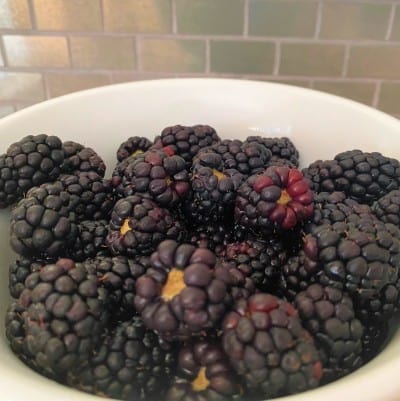
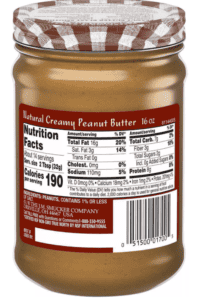
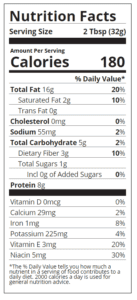

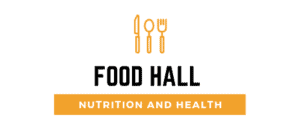
jani
It may be smart to veer away from "hydrogenated" fats if you are concerned about saturated fats or sustainability. Often, hydrogenated fats come from palm oil, which has issues with sustainability regarding harvesting. More and more, you may see labels that note the palm oil in the product was harvested sustainably. Of course, it will still contain saturated fat; however, hydrogenated fats are definitely preferable to partially hydrogenated fats, which contain trans fats and will surely clog arteries.
It is true that sunflower seed butter shares shelf space with peanut butter and other nut butter. Mothers whose children are allergic to peanuts are usually vigilant about label reading since this can be a very serious allergy leading to anaphylactic shock.
Aside from being suitable for people with allergies to peanuts, sunflower seed butter is very tasty! Unfortunately, it can be more expensive than peanut butter. I think Trader Joe's house brand may be more affordable, but not every city has Trader Joe's. 🙁
Thanks for reading!! 🌻
Ruth Hall
So interesting to compare the old p-nut butter stand-by and sesame seed butter—for a number of reasons, and by the way, thanks for sharing your tremendous research as like most people I know—no personal time for the detail work!
And as you point out, sunflower seed butter is a seed butter where p-nut butter is a legume so in the bean family! This might make a huge difference for those with allergies. They are not separated on grocery shelves, so busy moms might not think about this.
And just to mention—I veer away from the word hydrogenated—didn’t realize that partially hydrogenated and hydrogenated treat your body quite differently!